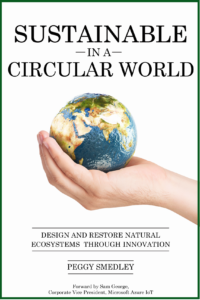The new year always brings new health goals for many people—get more sleep, move more, drink more water, etc. Well, at CES 2025 last week we saw a plethora of announcements of connected devices and technology that will help people reach those goals. And there is some research to back up that these types of devices are making people happier.
Sleep related technologies were in full swing at CES this year from smart mattresses, to anti-snore pillows, to sleep trackers, to smart rings, and beyond. But at CES, it is all about the data.
Sleep, Work, and What’s to Come
At the event, the National Sleep Foundation presented new sleep health data. The organization released new data showing insufficient sleep has a negative impact on the work productivity of 60% of Americans—and as such it anticipates employers may focus on sleep health in the days ahead.
The reported effects of poor sleep on people’s performance also touch everyday life, with 69% of Americans reporting difficult thinking clearly, and six in ten having problems handling their workload and avoiding mistakes if they’ve had poor sleep.
The foundation noted a steady increase in the development of new technologies and form factors targeting sleep, spanning wearable and proximal devices, environmental solutions, and clinical sleep solutions that improve the patient experience.
Will we see employers demanding sleep devices to track employees’ sleep trends? Likely not. But we may see employers focusing on education surrounding overall health habits in the year ahead to ensure productivity of workers on the job.
Of course, sleep is only one area where new technologies can help improve people’s health and life goals. Technology can bring greater convenience and happiness to people’s lives.
Devices Bring Calming Physiological Effects
A recent Stanford Zeitzer Circadian Research Lab study suggests a digital window has the potential to reduce stress. Digital windows can be hung on most walls and aim to bring the outdoors inside.
This research shows a 5% reduction in heart rate and a 40% decrease in electrodermal activity when participants view the digital view video compared to still images. One example is LiquidView’s Digital Windows.
While this is a digital window and not a physical one, it reminds me of the importance light plays on our circadian rhythms, which is a person’s body clock. Good lighting systems can facilitate healthy circadian rhythms.
The bottomline is smart-home technologies can easily intersect with healthy goals to provide people with the tools to succeed. As we watched CES unfold last week, we saw technology can play a role in helping reach health goals.
Want to tweet about this article? Use hashtags #IoT #sustainability #AI #5G #cloud #edge #futureofwork #digitaltransformation #green #ecosystem #environmental #circularworld #health


